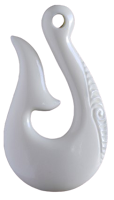Since Last Week
My reflections on how things have gone over the past week are:
1. What has worked for me since the last time we met?
We are working on a Statistical Unit at the moment, and the Google Sheets skills developed last week helped me to streamline the lesson so that the students can present their findings more easily
2. What hasn't worked (or made sense)?
Actually things seem to be all good at the moment … I’m just trying to find time to incorporate pick-a-path into my lessons.
3. What do you need help with?
Nothing at the moment.
This Week: Collaborate - Sites
A copy of this week's agenda can be found
here.
This week's focus was on Collaboration, with specific sessions on:
- Visible Teaching and Learning
- Multi-Modal Teaching and Learning
- Google Sites
- MultiText Databases
Visible Teaching and Learning
"Visible" is the first part of the four-part outer ring of Manaiakalani's 7 visible kaupapa. Some of the key messages from this session included:
- We use blogs and sites to ensure that our teaching and learning is visible. As a teacher I use my site to ensure that my students have ease of access to the learning from my lessons, and my students demonstrate their learning in their blogs.
- Teachers use Hapara to view our students' learning on their blogs. However, if the blog posts are not shared in the correct folders the learning is not visible to us.
- Teachers ensue that we acknowledge our learners' work by commenting on their blog posts, as this is how we close the communication cycle by providing visible feedback.
Multi-Modal Teaching and Learning
Engaging, or ‘hooking’ our learners into their learning is the first goal of the Manaiakalani programme, and we are working towards:
- Learners who are behaviourally engaged.
- Learners who become interested in and excited about their learning.
- Learners who are actively involved in their learning.
Initially, the introduction of technology in the classroom is engaging in itself, due to the novelty of a new vehicle for the learning, but as the learners become more used to the technology and they become more discerning consumers, it takes something more to "hook" them into the learning. In fact, today's learners are bombarded with competing and increasingly appealing alternatives to our lessons (e.g. an endless supply of Youtube clips). That's where Multi-Modal Learning comes in.
Multi-Modal Learning can be best described as "an inclusive, differentiated approach to teaching in a digital learning environment". It's how we make our teaching sites appealing and interesting for our learners.

Google Sites
Linked to the subject of Multi-Modal Learning, one of our challenges this week was to create a website that contained a multi-modal page on a topic of interest from the multi-text data base (see below). This is a screen shot of my finished product:
The actual site can be found
here. When I compare this with some of my current webpages I have to admit that I am a little disappointed with the way I have set up some of the pages of my current site. I need to spend some time upgrading my site to look a little more like my "test site" (above).
MultiText Databases
So I'm a bit old-school when I hear the expression "database", because I get flashbacks of working with "relational databases" like Microsoft Access ... I break out in a sweat, and I need to sit down until the shaking goes away. Today when we talk about "databases" what we actually mean is a table of data or hyperlinks, usually in a spreadsheet, and I was pleased to discover that this was what the presenters were talking about.
 |
This is a screenshot of the MultiText Database provided by the presenters.
|
Essentially, we were discussing the source of teaching and learning opportunities that can be used to make up our multi-modal learning. This is an excellent example of a collaborative teaching model that allow us as teachers to focus on the "how" of teaching rather than the "what".
Conclusion
I found this week's course very practical, as presentation is quite important to me (no, that isn't an admission of an OCD diagnosis). I have been thinking a lot about how best to structure my teaching site for the possibility of remote-learning should we be forced into another Level 3 or 4 COVID-19 lockdown. This week's session has given me a lot to think about, and a lot of tools to use to "hook" my learners into my lessons.
Perceptive readers (yes both of you) will have noticed that I have also migrated to the Manaiakalani template for my blog. I believe this format is a better structure and makes my blog more engaging for my readers ... but what do you think?






















